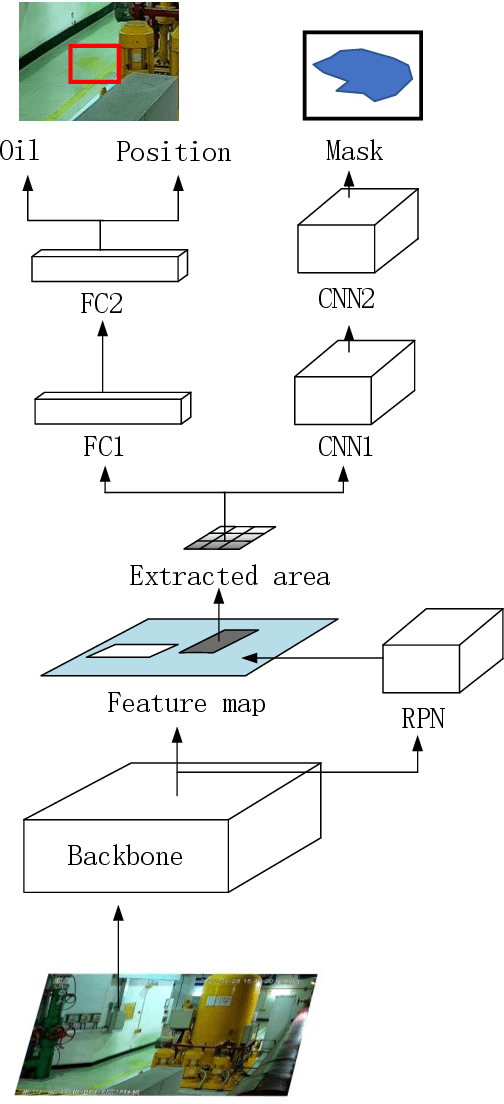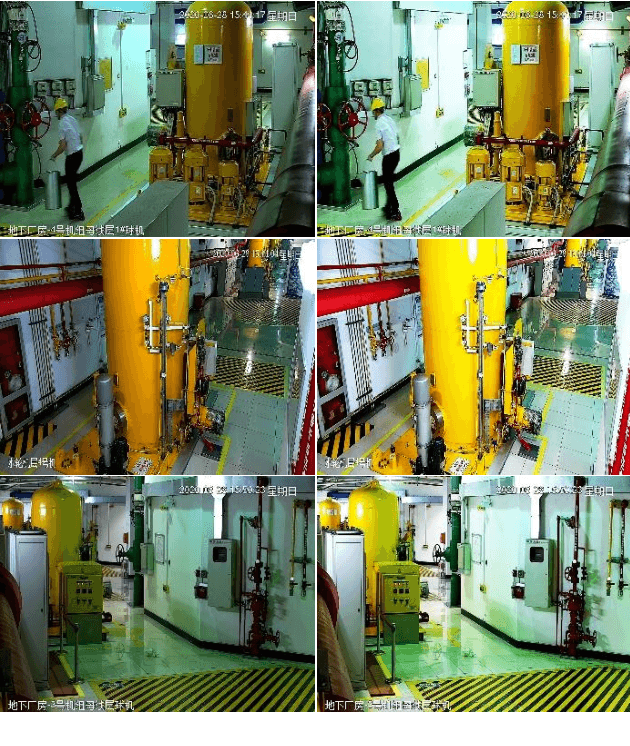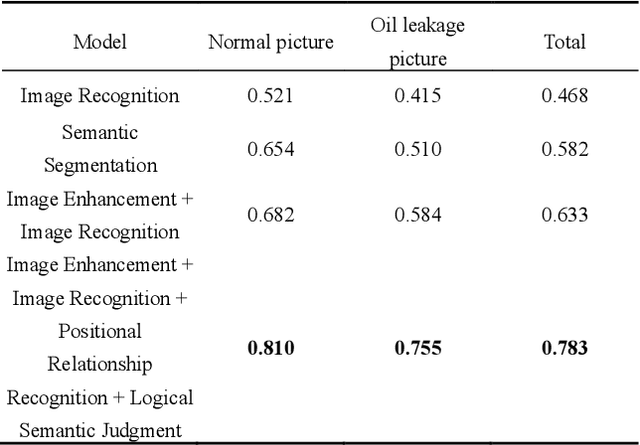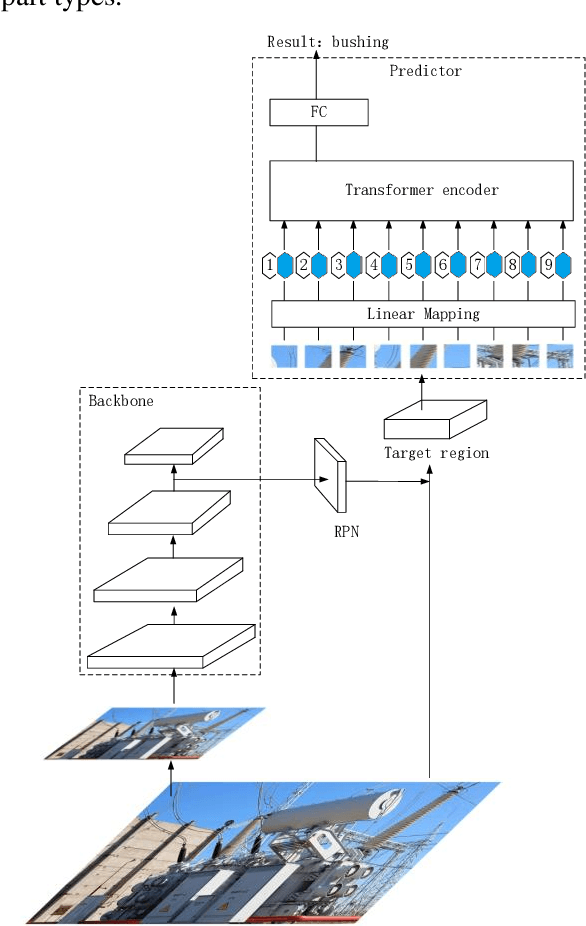Xun Ma
Image Recognition of Oil Leakage Area Based on Logical Semantic Discrimination
Nov 17, 2023



Abstract:Implementing precise detection of oil leaks in peak load equipment through image analysis can significantly enhance inspection quality and ensure the system's safety and reliability. However, challenges such as varying shapes of oil-stained regions, background noise, and fluctuating lighting conditions complicate the detection process. To address this, the integration of logical rule-based discrimination into image recognition has been proposed. This approach involves recognizing the spatial relationships among objects to semantically segment images of oil spills using a Mask RCNN network. The process begins with histogram equalization to enhance the original image, followed by the use of Mask RCNN to identify the preliminary positions and outlines of oil tanks, the ground, and areas of potential oil contamination. Subsequent to this identification, the spatial relationships between these objects are analyzed. Logical rules are then applied to ascertain whether the suspected areas are indeed oil spills. This method's effectiveness has been confirmed by testing on images captured from peak power equipment in the field. The results indicate that this approach can adeptly tackle the challenges in identifying oil-contaminated areas, showing a substantial improvement in accuracy compared to existing methods.
High-resolution power equipment recognition based on improved self-attention
Nov 06, 2023
Abstract:The current trend of automating inspections at substations has sparked a surge in interest in the field of transformer image recognition. However, due to restrictions in the number of parameters in existing models, high-resolution images can't be directly applied, leaving significant room for enhancing recognition accuracy. Addressing this challenge, the paper introduces a novel improvement on deep self-attention networks tailored for this issue. The proposed model comprises four key components: a foundational network, a region proposal network, a module for extracting and segmenting target areas, and a final prediction network. The innovative approach of this paper differentiates itself by decoupling the processes of part localization and recognition, initially using low-resolution images for localization followed by high-resolution images for recognition. Moreover, the deep self-attention network's prediction mechanism uniquely incorporates the semantic context of images, resulting in substantially improved recognition performance. Comparative experiments validate that this method outperforms the two other prevalent target recognition models, offering a groundbreaking perspective for automating electrical equipment inspections.
Overhead Line Defect Recognition Based on Unsupervised Semantic Segmentation
Nov 02, 2023Abstract:Overhead line inspection greatly benefits from defect recognition using visible light imagery. Addressing the limitations of existing feature extraction techniques and the heavy data dependency of deep learning approaches, this paper introduces a novel defect recognition framework. This is built on the Faster RCNN network and complemented by unsupervised semantic segmentation. The approach involves identifying the type and location of the target equipment, utilizing semantic segmentation to differentiate between the device and its backdrop, and finally employing similarity measures and logical rules to categorize the type of defect. Experimental results indicate that this methodology focuses more on the equipment rather than the defects when identifying issues in overhead lines. This leads to a notable enhancement in accuracy and exhibits impressive adaptability. Thus, offering a fresh perspective for automating the inspection of distribution network equipment.
Transmission line condition prediction based on semi-supervised learning
Oct 30, 2023Abstract:Transmission line state assessment and prediction are of great significance for the rational formulation of operation and maintenance strategy and improvement of operation and maintenance level. Aiming at the problem that existing models cannot take into account the robustness and data demand, this paper proposes a state prediction method based on semi-supervised learning. Firstly, for the expanded feature vector, the regular matrix is used to fill in the missing data, and the sparse coding problem is solved by representation learning. Then, with the help of a small number of labelled samples to initially determine the category centers of line segments in different defective states. Finally, the estimated parameters of the model are corrected using unlabeled samples. Example analysis shows that this method can improve the recognition accuracy and use data more efficiently than the existing models.
 Add to Chrome
Add to Chrome Add to Firefox
Add to Firefox Add to Edge
Add to Edge